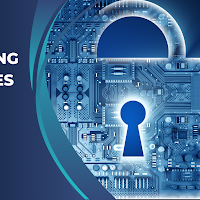
|
| Understanding Common Types of Cyber Threats |
Table of Contents
In today's interconnected world, the importance of safeguarding digital assets cannot be overstated. Cyber threats, which target individuals, organisations, and governments, have evolved in complexity and scale. This article provides a comprehensive exploration of the most prevalent types of cyber threats and their potential impact. By understanding these threats, we can better prepare to defend against them.
What Are Cyber Threats?
Cyber threats refer to malicious activities aimed at stealing, altering, or destroying data. They exploit vulnerabilities in systems to cause damage or gain unauthorised access. Recognising the different types of cyber threats is the first step in crafting an effective cybersecurity strategy.
Types of Cyber Threats
1. Malware: The Silent Invader
Malware, short for malicious software, includes programs designed to harm or exploit systems. Common forms include:
-
Viruses: These attach to legitimate programs and replicate themselves to spread across devices.
-
Trojans: Disguised as benign software, Trojans trick users into installing them, only to execute harmful activities.
-
Ransomware: A rapidly growing threat, ransomware encrypts data and demands payment for its release.
-
Spyware: This stealthy malware tracks user activity and collects sensitive information without consent.
2. Phishing Attacks: Deceptive Bait
Phishing is a social engineering tactic where attackers use fraudulent communications, often emails, to deceive users into revealing sensitive data.
-
Email Phishing: Fake messages that mimic legitimate organisations, urging users to click malicious links.
-
Spear Phishing: A more targeted approach, focusing on specific individuals or organisations to increase success rates.
3. Distributed Denial of Service (DDoS) Attacks
DDoS attacks overwhelm servers or networks with excessive traffic, causing them to crash. These attacks disrupt normal operations, leading to financial and reputational losses.
4. Man-in-the-Middle (MitM) Attacks
In MitM attacks, cybercriminals intercept and manipulate communications between two parties.
-
Public Wi-Fi Vulnerabilities: Attackers exploit insecure networks to intercept sensitive data.
-
Session Hijacking: Gaining unauthorised access to user sessions on web applications.
5. Advanced Persistent Threats (APTs)
APTs involve prolonged and targeted cyberattacks where hackers infiltrate systems, remain undetected, and extract sensitive information over time. These are commonly aimed at governments or high-value enterprises.
6. SQL Injection
SQL injection attacks exploit vulnerabilities in web applications by injecting malicious SQL code into query fields, allowing attackers to manipulate databases.
7. Zero-Day Exploits
A zero-day exploit targets unknown vulnerabilities in software or hardware. Since there’s no existing patch, these threats can cause extensive damage before being addressed.
8. Insider Threats
Not all cyber threats originate externally. Disgruntled employees or individuals with access to sensitive information can intentionally or unintentionally compromise systems.
9. Botnets: Networks of Compromised Devices
A botnet is a network of hijacked devices controlled by attackers. They are often used to carry out large-scale attacks, including DDoS campaigns and spam distribution.
The Consequences of Cyber Threats
The ramifications of cyber threats are significant:
-
Financial Losses: From stolen funds to recovery costs, organisations face enormous monetary repercussions.
-
Data Breaches: Sensitive information, including personal and financial data, can be exposed or sold on the dark web.
-
Operational Downtime: Attacks like ransomware and DDoS disrupt business operations, leading to lost productivity.
-
Reputation Damage: A single breach can erode trust among customers and stakeholders.
How to Protect Against Cyber Threats
1. Employ robust antivirus software.
Using reputable antivirus solutions helps detect and eliminate malware before it can cause harm.
2. Regular Software Updates
Keeping systems and applications updated ensures that vulnerabilities are patched promptly.
3. Educate Employees on Cybersecurity
Human error is a leading cause of breaches. Regular training helps employees recognise and avoid common threats like phishing.
4. Utilise Firewalls and Intrusion Detection Systems
Firewalls block unauthorised access, while intrusion detection systems monitor suspicious activities.
5. Enable Multi-Factor Authentication (MFA)
MFA adds an extra layer of security by requiring multiple forms of verification for access.
6. Conduct Regular Security Audits
Frequent assessments identify vulnerabilities and ensure compliance with best practices.
Frequently Asked Questions (FAQs)
1. What is the most common type of cyber threat?
Phishing attacks remain one of the most prevalent and effective forms of cyber threats, targeting individuals and organisations alike.
2. How does ransomware work?
Ransomware encrypts a victim’s files, making them inaccessible until a ransom is paid. However, paying does not guarantee recovery.
3. Can cyber threats target small businesses?
Yes, small businesses are often targeted due to weaker security measures compared to larger enterprises.
4. What should I do if I suspect a phishing email?
Do not click any links or download attachments. Verify the sender's authenticity and report the email to your IT department.
5. How can I secure my home network?
Use strong passwords for your Wi-Fi, enable network encryption, and keep your router firmware updated.
Cyber threats are an ever-present danger in our digital landscape. By understanding the different types of threats and implementing proactive measures, we can reduce risks and safeguard our sensitive information. Staying vigilant and adopting best practices ensures that we remain one step ahead of cybercriminals.

